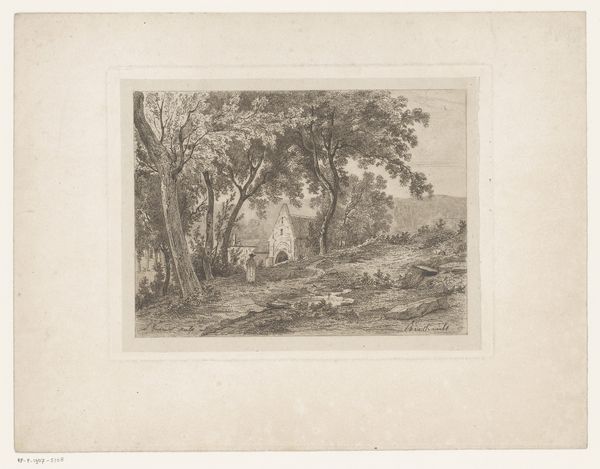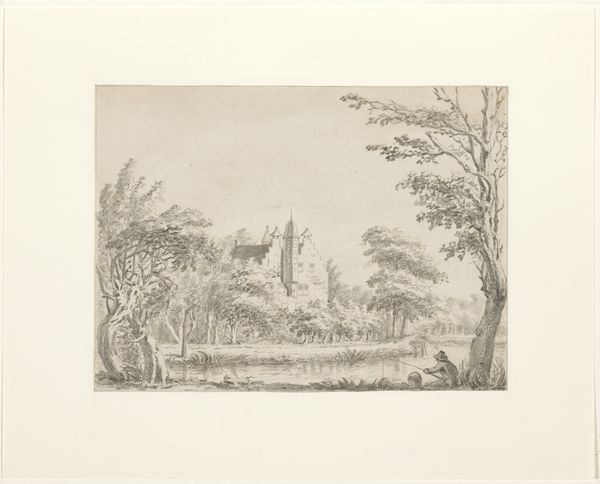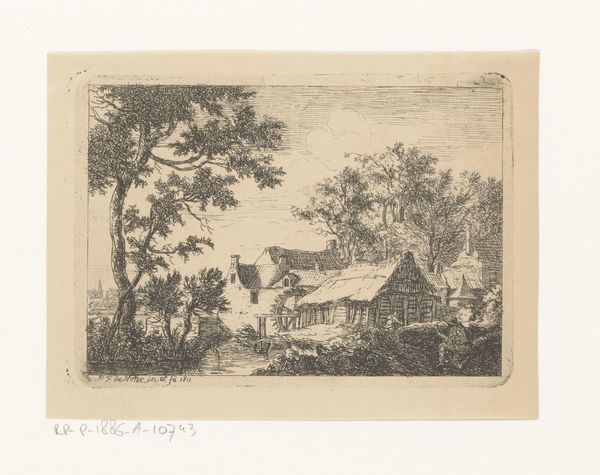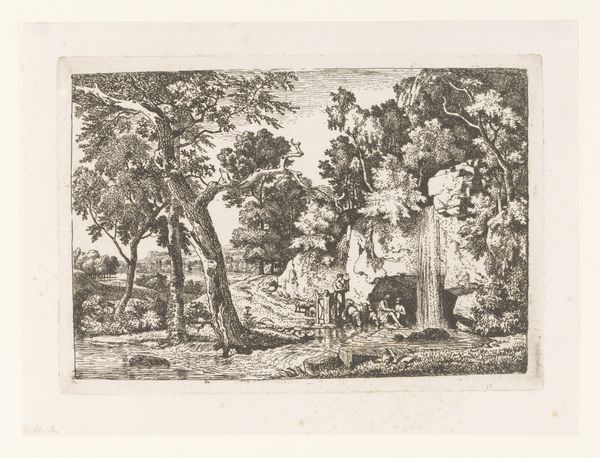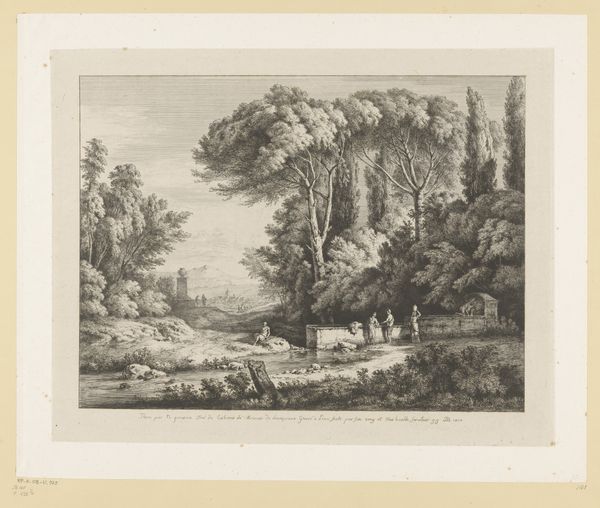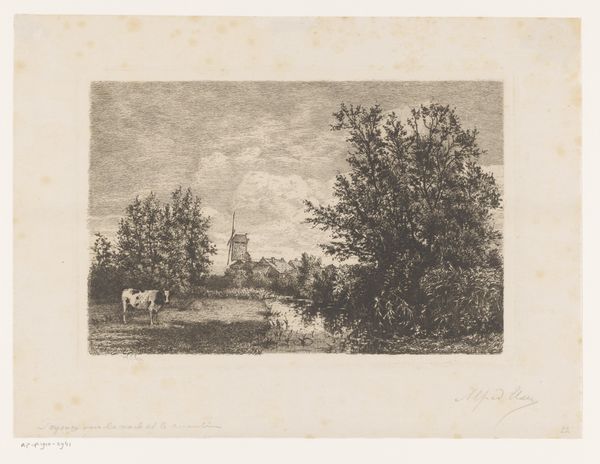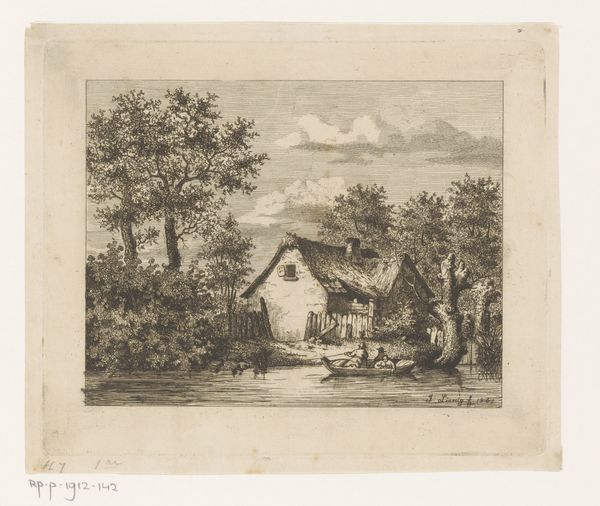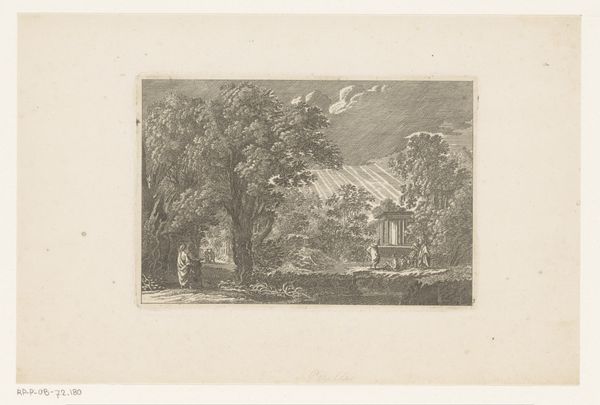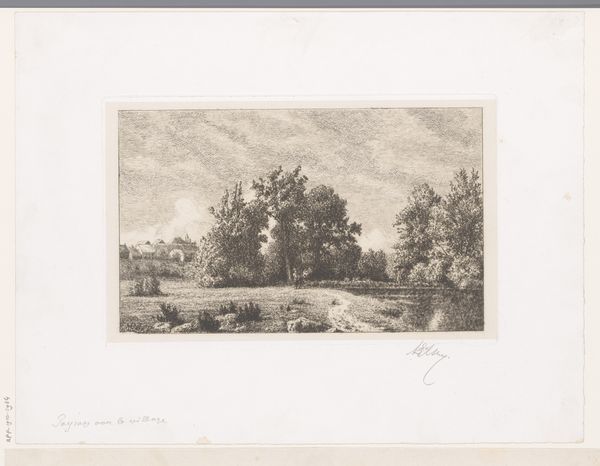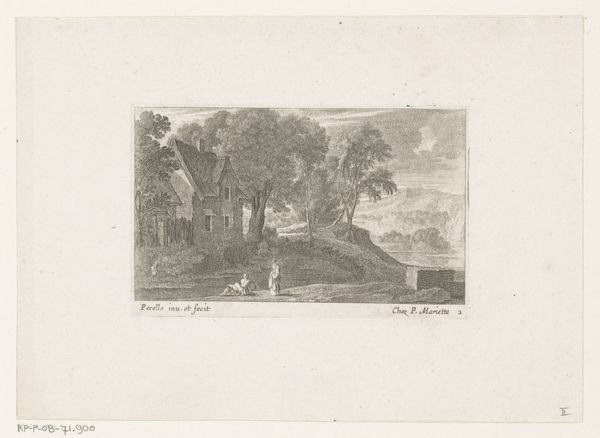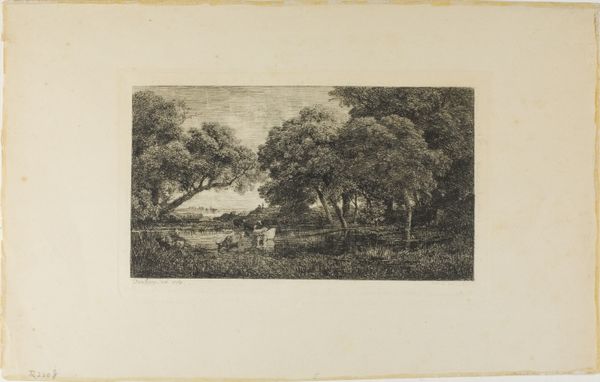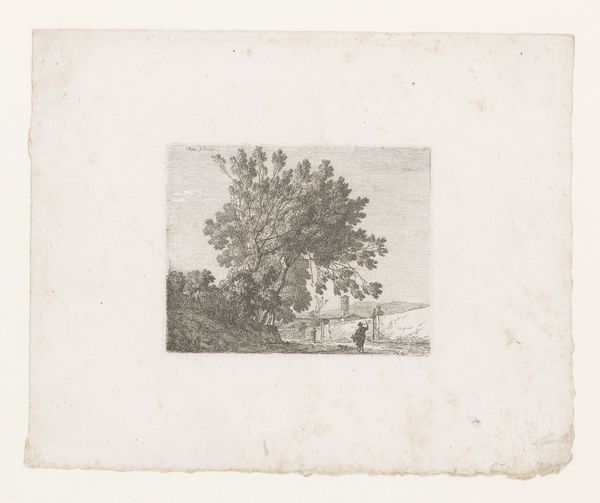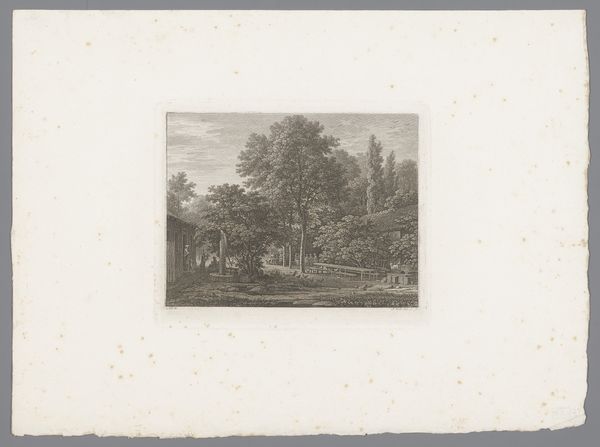
print, etching
#
neoclacissism
# print
#
etching
#
landscape
#
genre-painting
#
academic-art
Dimensions: height 214 mm, width 312 mm
Copyright: Rijks Museum: Open Domain
Curator: Jean Jacques de Boissieu created this etching, “Cattle and Grain Field Near a Farmhouse,” in 1793. The detail is remarkable. Editor: It feels like peering into a memory, doesn't it? Slightly faded, but holding onto a profound sense of peace and stillness. Curator: The composition is incredibly controlled, typical of Neoclassicism, isn’t it? Everything is meticulously placed: the positioning of the cows in relation to the farmhouse, the trees framing the scene. And it all serves this idea of rustic harmony. I would like to observe how it has been produced, and to evaluate how such a complex representation using just a handful of repeatable elements could produce such striking imagery. Editor: But is it truly rustic, though? It seems highly idealized. The very controlled application of etching evokes labor divisions between high art and the production that are happening on that field in reality. I can not see myself getting lost here. The labor has vanished, even as it is ever-present. Curator: It's a loaded gaze, certainly. I think Boissieu grapples with this, too. Note how he renders light and shadow, which imbues the landscape with such nuanced and somewhat melancholic emotion, an elegy, if you like, to that world. Editor: What also resonates, and that perhaps informs that gaze is how incredibly *laborious* etching is! The sheer repetition of lines necessary, the corrosive power of the acid on the metal plate... There's something about this repetitive action, this near-industrial quality, to something that romanticizes pre-industrial landscapes that holds my gaze. Curator: In our time, with anxieties about ecological precarity, this image may invite complex, deeply-layered reflection of labor, class, and what constitutes beauty. Editor: I'm glad we took a closer look. It's revealed itself to be less an idyll, perhaps, and more of a potent, intricate reflection on labor and landscape.
Comments
No comments
Be the first to comment and join the conversation on the ultimate creative platform.
